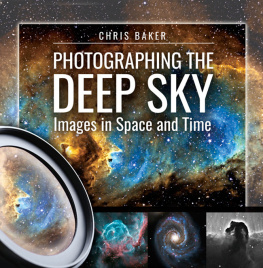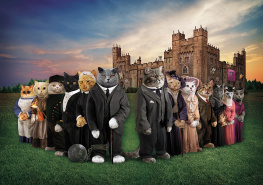


Published by
Princeton Architectural Press
37 East Seventh Street
New York, New York 10003
Visit our website at www.papress.com.
2014 Princeton Architectural Press
All rights reserved
ISBN: 978-1-61689-258-6 (print)
ISBN: 978-1-61689-351-4 (ebook)
No part of this book may be used or reproduced in any manner without written permission from the publisher, except in the context of reviews.
Every reasonable attempt has been made to identify owners of copyright. Errors or omissions will be corrected in subsequent editions.
Editor: Sara Stemen
Designer: Elana Schlenker
Additional text: Jay Sacher
Special thanks to:
Meredith Baber, Sara Bader,
Nicola Bednarek Brower, Janet Behning,
Megan Carey, Carina Cha, Andrea Chlad,
Barbara Darko, Benjamin English,
Russell Fernandez, Will Foster,
Jan Hartman, Jan Haux, Diane Levinson,
Jennifer Lippert, Katharine Myers,
Jaime Nelson, Rob Shaeffer, Marielle Suba,
Kaymar Thomas, Paul Wagner, and
Joseph Weston of Princeton Architectural
Press Kevin C. Lippert, publisher
Library of Congress Cataloging-in
Publication Data is available from the
publisher upon request.
INTRODUCTION
 ver since I was a child Ive enjoyed the company of various pet friends, from the family golden retriever, Happy, to a chicken named Bee Beeps, who would run free around our house and yard and lay eggs in a big brass bucket we kept in our living room. Sometimes she would peck at strangers socks if she thought they were too colorful. Her quirks were endearing, and I learned to love and care for pets as if they were my siblings. I often wondered where Bee Beeps would wander during the day and always hoped that she would come home safely to roost in her box.
ver since I was a child Ive enjoyed the company of various pet friends, from the family golden retriever, Happy, to a chicken named Bee Beeps, who would run free around our house and yard and lay eggs in a big brass bucket we kept in our living room. Sometimes she would peck at strangers socks if she thought they were too colorful. Her quirks were endearing, and I learned to love and care for pets as if they were my siblings. I often wondered where Bee Beeps would wander during the day and always hoped that she would come home safely to roost in her box.
Thanks to small, lightweight cameras that easily attach to collars or harnesses, we can now observe our beloved pets daily routines and discover how they spend their time when theyre out and about: napping under parked cars, climbing on rooftops, resting on porches, playing with sticks, staring at birdhouses, or jumping in the water. At a time when cell phones are equipped with high-quality camera lenses and capturing and sharing our daily rituals has never been easier, its not surprising that technology has also made it possible for animals to document their own experiences. This privileged glimpse into the lives of our pets and fellow creaturesat once so close and familiar to us, yet in many ways living among us as aliensmay open up strange new worlds and change forever the way we think about the lines between humans and animals. Like Alice down the rabbit hole, we may feel sometimes bewildered, often amused, and always enlightened as we view our surroundings through the fascinating perspectives of these intrepid canine, feline, or bovine explorers. We are certain to return transformed by the adventure.

Pigeon fitted with a camera.
The devices are new, but the impulse to give animals cameras is an old one. It turns out that pet photography has been around for a while: as early as 1908, in an effort to create aerial photographs from a birds perspective, the German photographer and inventor Julius Gustav Neubronner patented a small camera that could be attached to passenger pigeons. Visitors to international exhibitions could watch as these camera-rigged pigeons made safe landings. Neubronner would then develop the film on the spot and would sell the resulting prints as souvenir postcards, satisfying spectators curiosity about the birds-eye view.
So how exactly does a dog or cat or cow or horse take a photo? A pet camera can be attached to an animal by clipping it to the bottom of a collar or by securing it to a harness. Some harnesses are specially designed with attachments that position the camera on the animals back, which can capture a completely different perspective. These harnesses work best for larger animals.
I cant stress enough how important it is to carefully assess the weight of the camera in relationship to the size and weight of your pet. There are various small, light PetCams on the market, ones that an animal can carry on a collar with no stress or discomfort. But some animals, like our cat, Alice, have never worn a collar. It took Alice just a few unsupervised minutes to figure out a way to remove both the collar and the camera (although it took me two days to find both under the porch, where she left them). Even if your pet gets excited when the PetCam comes out of the drawer and is eager to wear it, be sure to remove the camera after each expedition, regardless of how light it is. Its our responsibility to ensure the safety, well-being, and happiness of our pets, and while our family dog, Fred, absolutely loves his camera, Alice is clearly not interested. She watches her brother take photos from the sidelines but doesnt participate herself. Respecting your pets response to the camera and the animals comfort level is the single most important part of this process.
PetCams can be programmed to snap pictures at specific time intervals (one-half second, one second, two, three...). Once you press the start button on the camera and your pet begins to explore, the device records images at the set interval and saves them to an internal memory card. When the memory card is full, the camera stops taking photos.
The act of creating something with an animal inevitably generates a bond. Essentially, youre collaborators. Setting off with a PetCam rigged to your pups collar means that an adventure is in store for both of you. Whenever I attach the camera to Fred, he gets excited. He knows that were about to go somewhere fun, often a place new to both of us. And since the camera is small, it doesnt get in the way of his good time or weigh him down as he explores.
After the two of you have returned from your adventure together, with that camera full of photographs, what do you do with all those photos? Youll sort through a bunch of, well, not-so-good snapshots to find a few stellar shots. In this digital age of photography weve become accustomed to taking dozens or even hundreds of photos, hoping for a few shining stars that will make our efforts worthwhile. In pet photography the law of averages is definitely working against you, but if you know that going in and youre willing to keep at ityou will be well rewarded.
You may also find a new appreciation for those not-so-good shots, which may offer a texture you wouldnt have captured intentionally with your own camera. Even if they are somewhat blurry, they often are charming because they reveal an unexpected point of view.
As a pinhole photographer Ive spent many years exploring the creative boundaries of experimental, do-it-yourself photography. One of the many reasons that pinhole photography has held my interest for so long is that I never know quite what Im going to discover when I develop my negatives. I can choose the scene and pick a certain size and shape of pinhole cameraperhaps one made out of a matchbox, shoe box, or oatmeal cylinderand I can select the film, but in the end, certain factors are always left to chance: the weather, the lighting, the movement of subjects. That element of surprise is an integral part of the process.
Next page










 ver since I was a child Ive enjoyed the company of various pet friends, from the family golden retriever, Happy, to a chicken named Bee Beeps, who would run free around our house and yard and lay eggs in a big brass bucket we kept in our living room. Sometimes she would peck at strangers socks if she thought they were too colorful. Her quirks were endearing, and I learned to love and care for pets as if they were my siblings. I often wondered where Bee Beeps would wander during the day and always hoped that she would come home safely to roost in her box.
ver since I was a child Ive enjoyed the company of various pet friends, from the family golden retriever, Happy, to a chicken named Bee Beeps, who would run free around our house and yard and lay eggs in a big brass bucket we kept in our living room. Sometimes she would peck at strangers socks if she thought they were too colorful. Her quirks were endearing, and I learned to love and care for pets as if they were my siblings. I often wondered where Bee Beeps would wander during the day and always hoped that she would come home safely to roost in her box.